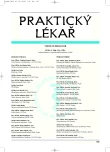A rare tunnel syndrome in the lower extremities.
Authors:
V. Matejčík; G. Pénzesová
Authors‘ workplace:
Neurochirurgická klinika LFUK Fakultná nemocnica s poliklinikou akad. L. Dérera
Published in:
Prakt. Lék. 2006; 86(4): 195-197
Category:
Of different specialties
Overview
Summary:
Presented are results of rare operations of tunnel syndromes of the ulnar and fibular nerves performed over a period of 14 years (1990-2004).
Subjects and methods:
Ten surgical interventions have been performed in ten patients in whom there have been treated ten tunnel sundromes that were unulateral in all cases. The patients were primarily treated at the authors‘ facility. No patient has underwent consequent re-operation. The clinical picture of comressive syndrome has been classified according to its intensity following Dellon into three degrees: I – in no patient; II – in one patient (10%); III – in 9 patients (90%). An analysis of the effectiveness of surgical intervention took into account the degree of compression, its extent and duration of symptoms.
Results:
Excellent and good results have been observed in cases with symptoms lasting up to 12 months in nine patients. In one patient there has been observed no improvement.
Conclusion:
The decisive factor influencing the result of surgical intervention is the degree of compression and its duration. The decisive factors improving surgical results are age under 30 years and duration of difficulties less than one year while obliteration signs are still reversible.
Key words:
rare coarctation neuropathies – paresthesia meralgica – tarsal tunnel syndrome – Morton’s metatarsalgia – fibular tunnel syndrome
Labels
General practitioner for children and adolescents General practitioner for adultsArticle was published in
General Practitioner

2006 Issue 4
Most read in this issue
- A rare tunnel syndrome in the lower extremities.
- Prognostic and predictive factors in prostate cancer
- Social differences and population health.
- How do medical students see the position of a physician in the society?
